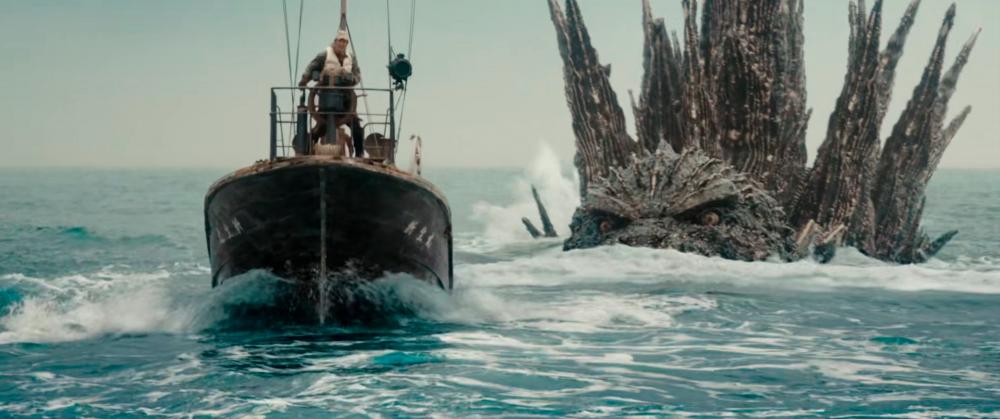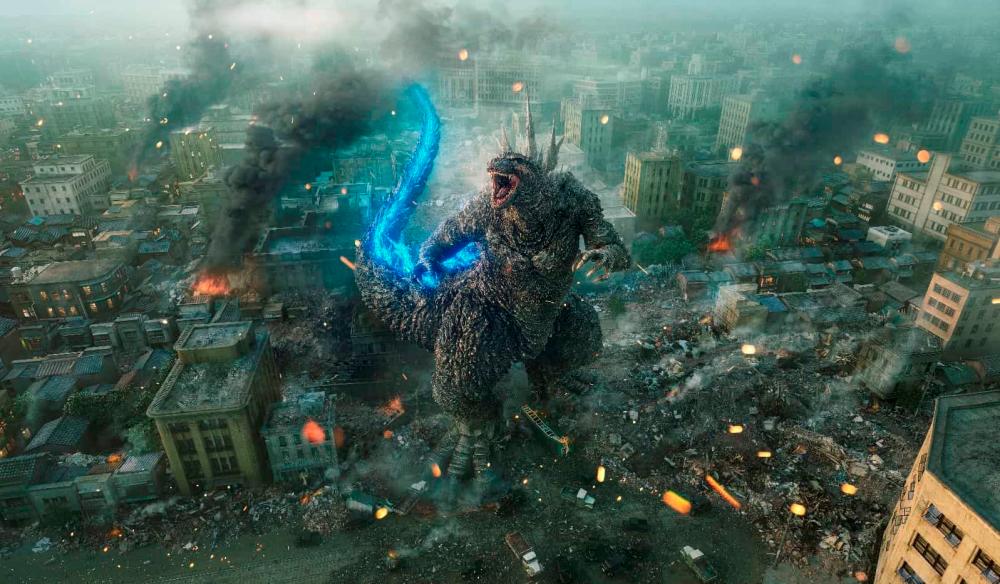THERE is a clear line drawn in the sand between Toho and Legendary Pictures’ Godzilla films.
Although they share the same genetic strain, they could not be further apart, like twin children separated at birth and fostered by two different families from starkly different socioeconomic backgrounds. This has never been clearer than Godzilla Minus One.
For Legendary Pictures and Warner Bros Pictures Monsterverse franchise, Godzilla is the hero. In the recent Godzilla x Kong: The New Empire, the giant lizard teams up with his oversized monkey friend to save Earth.
On the other hand, Toho’s Godzilla Minus One features Godzilla as how Ishiro Honda conceived the creature in 1954’s Godzilla: an allegory for the nuclear bombs dropped on Japan, coalesced into a force of nature that will kill everyone and destroy everything in its ravenous path.

A towering shadow
Towards the end of World War II, the Empire of Japan’s soldiers are waiting for their inevitable defeat. Absconding from his duty, kamikaze pilot Koichi Shikishima (Ryunosuke Kamiki) escapes to a Japanese base on Odo Island.
The night that he arrives, Godzilla emerges from the ocean, attacks and slaughters the engineers at the base, leaving only Shikishima and lead engineer Tachibana alive. The latter blames Shikishima for the deaths, as he had failed to use his plane’s machine guns to shoot the monster.
Returning to his home, Shikishima finds out that his parents died during the Tokyo bombing. Another orphan, Noriko Oishi (Minami Hamabe) and an orphaned baby, Akiko, form an “unofficial family” with Shikishima.
In order to support their little family, Shikishima takes up a risky but well-paying job aboard a boat, with the crewmen tasked to destroy the thousands of mines dropped in the ocean during the war.
Sometime in 1946, the US’ Operation Crossroads nuclear tests causes Godzilla to mutate, growing to an alarming size and displaying heightened aggression. A year later, Shikishima once again encounters the monster while at sea, with Japan then suffering catastrophic damage and loss of life.
Elevated by good writing
More often than not, for a lot of these Godzilla films, the parts of the story that focus on the humans are terrible. The recent American films are the biggest culprits of this. However, Toho has never had this problem and they have always weaved human drama into the film’s fabric in interesting ways.
In 2016’s Shin Godzilla by Hideaki Anno and Shinji Higuchi had humans playing an integral role in displaying the ineffectiveness of politicians, bureaucracies and governmental red tapes during national catastrophes.
In Godzilla Minus One post-war Japan, writer-director Takashi Yamazaki weaves survivor’s guilt and post-traumatic stress disorder into the tapestry of what drives the human aspect of the film. There is also a rather leftist, slightly anarchist element with how the film focuses on civilians rising up to face a national problem due to government unreliability and inaction.
This period of Japan’s history is one that is full of existential crises and Yamazaki excavates that gem-filled mine for some great storytelling, and the cast does a wonderful job bringing everything together.

Limited release
Anyone still expecting local cinema operators to get the distribution rights to Godzilla Minus One to be played in Malaysian cinemas should probably give up at this point. This extends to every Southeast and East Asian country.
For some unknown reason, Toho’s limited release decision to screen the film only in Europe, America and Japan remains unchanged.
The film entered the Japanese home media market at the start of May, and eventually, Toho’s latest Godzilla film will have a wider international release on Blu-Ray, DVD and streaming. It is a shame, as the film needs to be watched on a big screen to be fully appreciated.
Sequences such as Godzilla’s Jaws-esque pursuit of Shikishima’s minesweeper boat would be better experienced on an Imax screen. Then there are the sequences like Godzilla’s attack on Ginza city.
A show-stopping moment that would be great in a cinema hall is when it uses its atomic breath, drowning out the sound, before it rushes back in, crushing the audience with excellent sound engineering and design, as their mouths are agape from the sheer destruction and instantaneous death of thousands they witnessed before going deaf.









